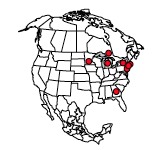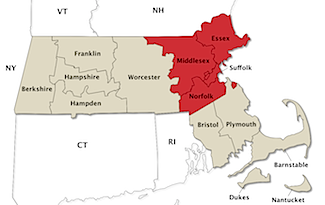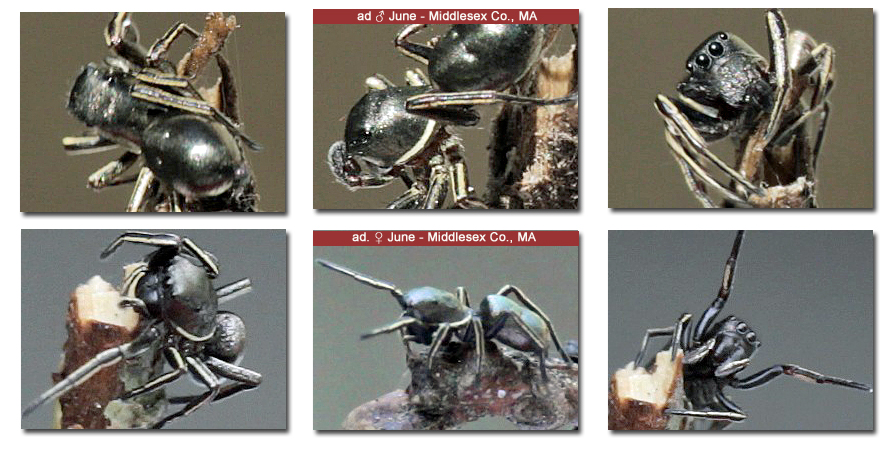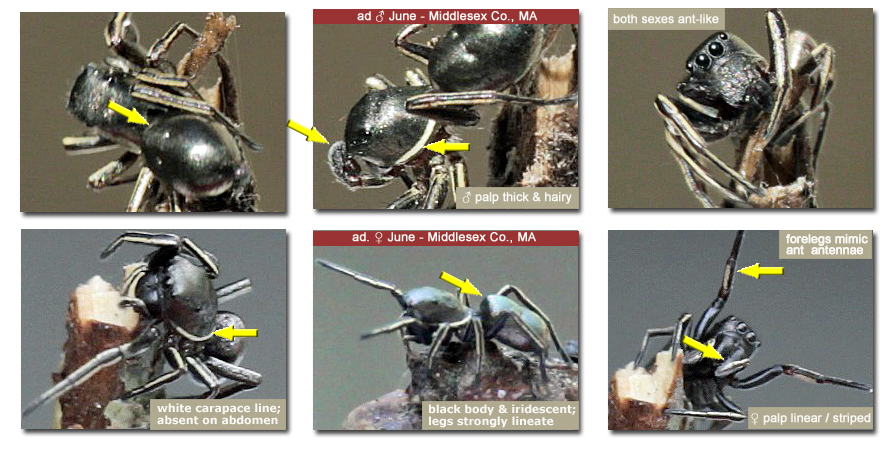Tutelina formicaria (Emerton, 1891)

Richman, Cutler & Hill 2012
Tutelina formicaria seems to be the least well known (fewest published records and photographs) of the four species of Tutelina spiders in North America; it also has the most restricted range. Kaston felt the spider was uncommon and suggested that its association with ants might explain why it was seldom observed. My own experience suggests that this species keeps a very low profile. The spiders form a loose “colony” where they inhabit the bases of grasses and low growing herbs; they may also be found in, under, and around small pieces of weathered tree limbs lying on the ground. Two species of ants are prevalent in the area where I have found this spider. Formica dolosa (5-7 mm) is a reddish-brown species and is, in every instance I have observed, the prey of T. formicaria. The other conspicuous ant Formica subsericea (< 5 mm) is black. The two ant species forage over the same ground in what seems to be a peaceful coexistence – suggesting the presence of F. subsericea causes no apparent alarm when encountered by F. dolosa. This raises the possibility that F. subsericea is the “model” for T. formicaria – perhaps providing visual “cover” for the spider by allowing a close approach to its prey F. dolosa. With thanks to Tom Murray and Dave Lubertazzi.
Emerton 1891; Kaston, 1981
Massachusetts – First State / County Records

- ♦ *J. H. Emerton – Icius formicarius – Essex (Salem), Middlesex (Medford) – Emerton, 1891: 235, pl. 18, f. 6
- ♦ E. B. Bryant – I. f. – Suffolk (Allston), July 1904 – Emerton, 1909: 227, pl. 11, f. 8
- ♦ **BSNH – I. f. – Norfolk (Brookline) – Bryant, 1908: 96
-
♦ Connecticut – I. f. – Kaston, 1948: 490, f. 1824-1827 –
This spider is not common.
8 records - *The Medford record refers to the specimen that is the holotype for the species and is at the MCZ (#21359) in the J. H. Emerton Collection.
- *Peckham, G. W. & Peckham, E. G. 1909. Revision of the Attidae of North America. Transactions of the Wisconsin Academy of Sciences, Arts and Letters 16(1): 355-655.
- **See Bryant, 1908



